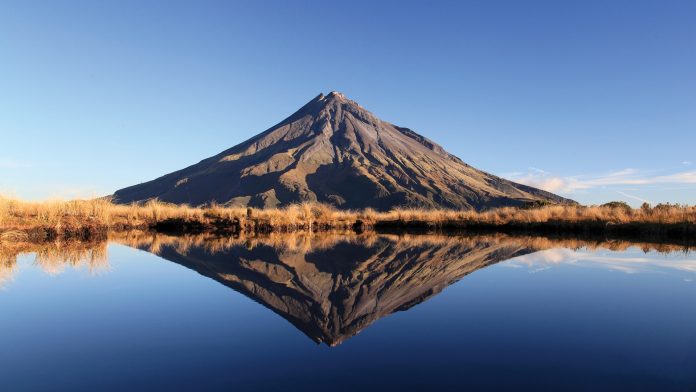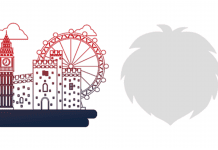
New Zealand start-up Greenfern is on its way to becoming an environmental leader in the burgeoning, highly electricity-reliant medicinal cannabis sector.
Row upon row of feathery leaves create an emerald blanket inside the greenhouse. Just beyond, a torrent of water rushes through the hydro power station that helps to grow the thriving plants. In the distance, snow-capped Mount Taranaki is ethereal, shrouded in mist.
This is the very scene that the founders of Greenfern Medicinal Marijuana are realising at a unique and pristine location in New Zealand’s North Island, a company ready to take on the medicinal cannabis sector. Set on the banks of the Waingongoro River in Normanby, construction is due to begin on the growing and extraction facilities later this year, where thousands of cannabis plants are destined to be turned into premium quality, pharmaceutical grade products.
While there is a strong economic case for the operation, the founders of Greenfern have other priorities at the heart of this operation. Namely, people and the environment.
They’re aiming to produce premium quality medicinal cannabis grown indoors using renewable hydro energy. Therein lies their unique competitive advantage. Commercial cannabis production consumes a lot of energy. It is perhaps the largest overhead in the production process. Located right beside the Normanby Hydro Power Station, Greenfern has secured an agreement to procure exceptionally low power from the station which they are also shareholders in.
It makes sense from both an economic and environmental perspective to use hydro power to grow these medical marvels, and the consumer will benefit. Reduced growing costs means Greenfern will be able to provide products to the market at a price that’s affordable.
The key market for cannabinoid products that Greenfern has identified is people with chronic health issues such as arthritis, cancer and epilepsy. That market is also part of the inspiration that drove the start-up’s founders to launch Greenfern.
John Hussey, Daniel Casey, Daniel Leyden, Tim Johnson and Brendon Partridge met each other at primary and secondary schools in Dunedin. They played rugby together and, after school finished, they went their separate ways but kept in touch.
Later, Casey and Leyden lived in Wanaka. Their love of the outdoors saw them snowboarding in their spare time and working on the local mountains. It was there they met TJ Irvin and he told them about his son, Theo.
At age 3 ½, Theo began to have grand mal seizures. Violent, frightening seizures that would grip Theo 30-40 times a day. Doctors struggled to get the condition under control and Irvin spent hundreds of hours researching how he could help his son.
He discovered that US research had suggested it was possible cannabis could be used to
treat epilepsy.
Irvin began to give his son medicinal cannabis oil. It worked. And Theo, now 9, has been seizure-free since. Theo is back to being a care-free boy; the Irvin family has returned to normal.
In parallel, the five friends “were always planning ideas”, Casey said. Inspired by Irvin efforts to help his son live a normal life, the group began talking about the emerging medical cannabis industry.
The diverse group of guys is made up of civil and electrical engineers, an IT/Blockchain tech start up entrepreneur and a director of food and beverage of a Fortune 500 hotel chain. Perhaps not the most likely group of lads but they all shared a common ground – a passion for renewable energy and, in particular, hydro power.
Having all bought into the Normanby hydro scheme a number of years previously the idea of producing medicinal cannabis on the site using the clean-generated power at almost no cost seemed like a no brainer.
“Fiscally it made sense. From the research we’ve done, we know that one of the highest costs of an indoor medicinal cannabis growing operation can be power consumption – potentially around 60%,” Casey said.
Ideas were floated, feasibilities undertaken, and the company was incorporated on the NZ Companies Register in April 2018.
Earlier this year, the company successfully completed a public equity crowdfund, raising NZ $1.8million (~€1 m).
In late 2018 New Zealand’s misuse of Drugs (Medicinal Cannabis Amendment Act) became law. This means that there is a guarantee that by the end of 2019 a regulatory regime around licencing, production, prescription and consumption will be established. There will be an extension of the statutory defence of people who are terminally ill or in palliative care to use cannabis without fear of prosecution and local strains of cannabis can be used in developing a domestic medicinal cannabis market.
New Zealand has lagged behind the rest of the world in terms of its cannabis laws, but that’s changing. And Greenfern has been able to use that to its advantage by watching what works and what doesn’t work elsewhere.
How does Greenfern Medicinal Marijuana (GMM) fit into the New Zealand medicinal cannabis scene?
Greenfern has been in a building and knowledge absorption phase while staying fluid in the fast moving and early days of the New Zealand medicinal cannabis scene.
They’ve been careful not to take on too many overhead costs while there is not a revenue stream in the still illegal industry of medicinal cannabis cultivation in New Zealand. The only real licence for cultivation at this point is for research purposes of which GMM have their application lodged with the Ministry of Health.
“It is an iterative process with a heavy weighting, as expected, on security. Also, the need for detailed standard operating procedures being required takes careful planning and strategy. Once the licence application is approved and we are confident of this then we can jump straight into the research phase,” Casey said.
“We see ourselves as a not only producers of top-quality good manufacturing practice (GMP) cannabis products and extracts but also pioneers in the clean production of these products. We have an ethical obligation to the environment in everything we do, and the people of New Zealand deserve the best quality products at the best price available and we can achieve that by our point of difference of having exceptionally cheap power.”
Greenfern is setting up in the dairy, oil and gas-heavy region of Taranaki. Historically this has been the staple of the surrounding area. “Greenfern is shining a light on the real potential this alternative new industry can have for the region,” Leyden said. “We know the traditional industries of dairy, oil and gas have a large environmental footprint. By contrast, this exciting new industry offers economic sustainability and a much lower environmental cost.
“We want to provide jobs and industry in this area, keep people and families in the region and stop the brain drain to the larger centres and overseas – something that is a real problem in New Zealand. “If we can help sick people, create jobs to lessen unemployment, train youth all while looking out for the environment then the profits will come. That we know.”
Tell us about your existing outdoor operation
Irvin is Greenfern’s outdoor grow manager. Holder of a Ministry of Health industrial hemp growing licence, he has been growing hemp since 2017 in New Zealand’s South Island. Irvin and Greenfern are currently growing Cannabis Sativa .L (hemp) under an industrial hemp licence through the Ministry of Health.
Until recently Greenfern’s hemp was grown to supplement animal feed and as a phytoremediation crop; cannabis is known to be one of the best soil cleaning plants on the planet. But a law change in 2018 now allows hulled hemp seed to be grown for human consumption. This has opened a number of other avenues for Greenfern.
From this year’s crop, Greenfern is looking at producing beauty products from the hemp oil. And they’ve teamed up with a Wellington innovative craft beer brewery, Double Vision, to produce a pilot batch of hemp beer which is made from the biproduct from pressing hemp oil. The beer will be available next month.
Not only does the company have a contract in place to increase their outdoor growing capabilities to 10 hectares of hemp for the 2019/20 growing season, but they have 100 hectares of land available next to their Normanby location ensuring the land they need for their growing operation is future proof.
As well as having a seed supply agreement with a European supplier with a mixture of CBD (cannabidiol) and THC (tetrahydrocannabinol) strains, Greenfern has also recently joined the Hempseed Holdings Limited cooperative. This allows Greenfern shareholder rights to a seedstock which is New Zealand’s first and only Ministry of Health approved
New Zealand hemp cultivar.
“It is going to be exciting working with this cultivar which has been many years in the breeding by a legendary New Zealand hemp pioneer,” Casey said.
Where is Greenfern at in terms of producing medicinal cannabis products and what are the opportunities in New Zealand?
Greenfern has submitted its application for the licence to grow cannabis, a prohibited plant for medical or scientific research, has purchased building units for the research phase and has finalised designs for the second stage of growing once the laws allow.
And, they have a research and development agreement with Callaghan Innovation, a New Zealand Government agency, to support their analysis and extraction processes during their research program.
“We strongly believe in research-driven outputs and working with reputable academic institutes to ensure this,” Hussey said.
As such, Greenfern are conducting hemp research with the Riddet Institute whose partners include The University of Auckland, Massey University and University of Otago. The Riddet Institute is a premier centre for fundamental and strategic scientific research. Its area of expertise is at the intersection of food material science, novel food processing, human nutrition and gastrointestinal biology.
“We will be working with the agricultural and horticultural department from Massey University,” Hussey said. “We will provide students with research projects and practical work experience so a career pathway can be forged in this new industry.”
Massey University is ranked number 1 in New Zealand for agricultural science by the Shanghai Ranking’s Global Ranking of Academic Subjects and is ranked by Quacquarelli Symonds as one of the top 50 universities for agriculture in the world.
What is the market size for cannabinoid products?
While the market size for cannabinoid products in New Zealand is difficult to quantify, the Ministry of Health estimates that 250,000 casual users are in fact medicinal cannabis users, with a market potentially worth approximately $1 billion.
In 2017, a new report ‘New Zealand’s Medicines Landscape’ quantified the state of New Zealand’s major health concerns – all of which are concerns where patients may benefit from cannabinoid products:
- There are 624,000 patients with Arthritis – costing New Zealand $3.2 billion per annum;
- In 2014, 20,000 people were diagnosed with cancer and 9,251 have died; and
- Cancer treatment costs New Zealand $880 million per annum and the country has an average cancer rate that is 62% higher than the world average.
“While the pharmaceutical industry is difficult to measure with regards to cannabinoid products this data shows a core market that could benefit from Greenfern’s products now – 624,000 arthritis suffers, 20,000 new cancer patients each year,” Hussey said.
And Epilepsy New Zealand has verified that there are 48,000 people in New Zealand living with epilepsy. “If one third of those are drug resistant – like Irvin’s son Theo was – then there are more than 15,000 that could benefit from a cannabinoid alternative.”
Honouring young Theo’s journey, Greenfern has bold ambitions to produce a clinically proven epilepsy medicine. They’ve already found a clinical trial partner in Novotech, an internationally recognised full-service contract research organisation with proven experience in clinical trial cannabinoid products for epilepsy.
“Not only can we respect our environment and utilise the unique features like hydro power, but we hope to give other families like mine the ability to live a normal life again,” Irvin said.
According to a report from Arcview Market Research and BDS Analytics, global medicinal cannabis sales are estimated to comprise $19.1 billion. The report notes that Europe – and its $1.5 trillion in healthcare spending – has the potential to be the largest medicinal cannabis market on the planet. While South America’s market is expected to grow from $125 million this year to $776 million by 2027.
With a unique competitive advantage in its hydro powered growing facilities, access to a broad market, and being run by a collective of smart people who are focused on innovation and sustainability, Greenfern is well on the way to producing exceptional quality, competitively priced cannabinoid products that will improve people’s lives.
So, what next for this Kiwi start-up?
“We’ll be seeking additional wholesale investment this year,” Hussey said.
“Our business model puts people and sustainability before profit. Our earlier crowdfunding efforts mean we now have a broad base of investors who share that vision. “We want to go to market again later this year to secure additional investment to help fast track establishment of larger growing capacity, extraction facilities and GMP manufacturing capabilities.”
Mt Taranaki is a landmark of cultural significance on the western shores of the central North Island. It was formed some 120,000 years ago and scientists believe the mountain is dormant rather than extinct, even though it hasn’t erupted since 1775.
From the upper reaches of Mt Taranaki’s snowy slopes form rivers which run down to the lowlands in a radial pattern. One of these rivers is Waingongoro, which means resting or sleeping place and was the name given to the river by Maori from the Aotea canoe of the Great Fleet, who arrived in New Zealand about 1350 AD and made their way over land to settle in South Taranaki.
The Waingongoro has its source on the south-eastern slopes of Mount Taranaki between the Stratford Plateau and Dawson Falls and winds 74 km through productive dairying country to reach the sea at Ohawe, seven km west of Hawera.
Today, the river flows through the rohe (traditional tribal area) of the Ngati Ruanui and Nga Ruahine iwi.
Situated on this river lies a township called Normanby. It is close to here that in 1903 a hydro power scheme was commissioned and built using a 6m tall weir to dam the river at a looped section and allowed water to be taken via a piped section that fed a pelton wheel generator where the water was then fed back into the loop. Normanby hydro used to power the surrounding towns of Hawera, Eltham and Manaia. The scheme was decommissioned in 1967 then rebuilt in 2011
Dan Casey
Managing Director
Greenfern
+64 27 420 2476
dan@gmm.nz
Tweet @GreenfernMedic1
https://gmm.nz/
Please note, this article will appear in issue 10 of Health Europa Quarterly, which will be available to read in July 2019.









